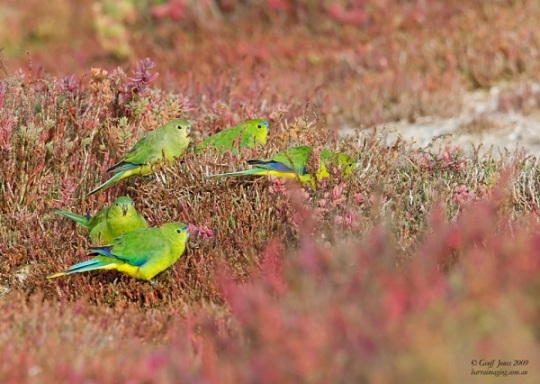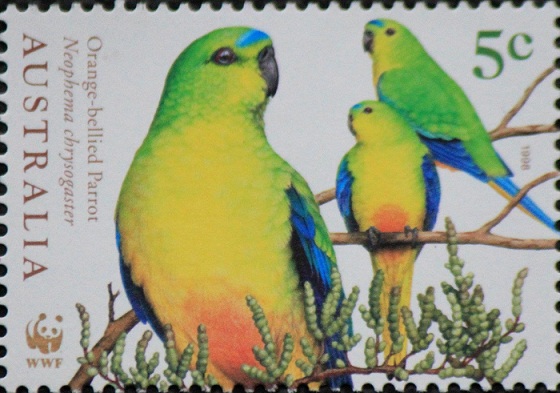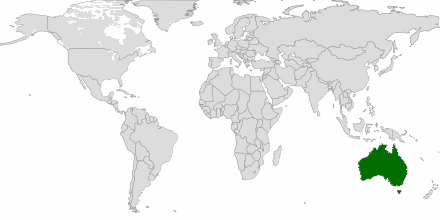The Red List | Orange-bellied Parrot



Do you know these facts?
On 2012, survey reports only 21 adult Orange-bellied Parrot sightings in the wild, including only 8 females. The species has reached such a low level of population that the whole species may go extinct with a single event, e.g. storm.
The Orange-bellied Parrot was identified as threated as early as 1970s. Despite huge efforts by governments and other organizations, the population kept on reducing. In 90s though the population was believed to be stabilized at around 150 inviduals, the population saw steep downfall post 2005.
The parrot breeds only in one place, a narrow coastal strip in south-west Tasmania, called Melaleuca.
This small parrot species is monogomous. They mate for life, occupying a nest for up to five years.
The Orange-bellied Parrot migrates only at night, usually distracted by bright lit boats, light houses on the way.
The Orange-bellied Parrot has a very distinct voice that distinguished it from other parrot species easily.
This little parrot species is one of the only two long distance migratory bird in the world. The other one is Swift Parrot.
The Orange-bellied Parrot recovery program has color coded the individuals in wild with band on leg. Various data when the invidual bred, what group it belongs to etc can be easily identified by looking into the color codes of the band.
The Orange-bellied Parrot is a “grass parrot” found only in South Eastern Australia.
The Scientific Name : Neophema Chrysogaster
Where is it found?
Till 1920s, the Orange-bellied Parrot was wide spread in Australia, hundreds in numbers in the coastal saltmarsh area. It was witnessed throughout Southern Tasmania during summer and during winter from Port Adelaide to Corner Inlet. But due to rapid agriculture expansion, industrialization and residential development, the habitat of the parrot species shrinked sgnificantly in mid 20th century. In 1970s Melaleuca was identified as the only known breeding ground for the species. During winter the birds migrate to Victoria,stopping over on King Island. The adults migrate during February and the juveniles during March-April. The birds migrate back by September to November to Tasmania.
How does it live?
The Orange-bellied Parrots feed primarily on coastal saltmarsh. They are generally found on the ground or in low foliage searching for food. The diet consists of seeds of several sedges, everlasting daisy Helichrysum pumilum and heath plants, including buttongrass. Orange-bellied parrots chose their mate for life. They reach the adulthood within a year. They make Nests within the holes of eucalypt trees that are not higher than 5 meters in height. The female incubates the clutch of four eggs. The lifespan of the species is around 4 years in wild. But in captive they can live longer. The oldest male recorded was 11 years and the oldest female was 10 years in captivity.
How does it look?
The Orange-bellied Parrot is a small parrot species, around 20-25 cm in length and 45-50 grams in weight. The adult male has two-tone blue frontal band, green-blue uppertail with yellow sides and prominent orange patch on belly. The under wing-coverts and flight feathers have royal blue leading edge. Its beak and feet are greyish in colour. The adult female is a dull green with a pale blue frontal band. The juvenile is similar to adult female but with a duller green frontal band.
What are the threats?
The recovery program for Orange-bellied parrot was established as early as 1983, 30 years from now. The recovery team studied and monitored the parrot for decades but unfortunately not able to stop the decline of population of the birds. The main threat for the birds population decline is attributed to loss of habitat specially the over-wintering habitat in the coastal region due to agriculture, industrialization and other human activities since the European settlement in the continent. The new sttlement also brought in new species like sparrows, goldfinches and greenfinches with whom the orange-bellied parrot has had to compete for food, nest etc. Predators such as foxes and feral cats have also taken their toll on the population. Another severe threat to the species is the low breeding productivity observed in recent years. The reason for this is not clearly known but may be due to the loss of high quality saltmarsh. The quality of saltmarsh is specially degraded in the mainland
Conservation Efforts
The Orange-bellied parrot recovery program was first started in 1983. The OBP recovery team has contributed a lot towards studying and conservation of the species over the years. Australian Government has invested millions of dollars in the conservation of the species directly or indirectly. Unfortunately the parrot’s population kept on declining and there is always a need of more fund to protect this beautiful species from extinction. The contribution from Birds Australia and the national/international volunteers not to be forgotten in the efforts of the parrot’s conservation. There are various sides of the total conservation efforts. This includes protecting the saltmarh homes, providing adequate food in the competitive environment, keeping the enemies away and keeping close eye on unexpected events like diseases, natural calamities etc. One major portion of the efforts also go into raising an ‘Insurance’ captive population. The current captive population stable at around 170 birds housed at various sites across Tasmania and mainland. Between 1994 and 2009, around 365 captive birds are released into the wild, unfortunately that couldn’t bring the wild population up.
We need to remember that extinction is irreversible process in science till now. If we lose the Orange-bellied parrot, it will be lost forever!
A small clip on Orange-bellied parrots by ‘Act Wild’
3 Comments For This Post
Leave a Reply
MOST CONCERNED ENDANGERED SPECIES
- Kashmir Stag (Hangul) - 229 votes
- Iberian Lynx - 154 votes
- Great Indian Bustard - 150 votes
- Long-Tailed Chinchilla - 138 votes
- Greater One Horned Rhino - 100 votes
- Orange-bellied Parrot - 95 votes
- Snow Leopard - 92 votes
- Red Panda - 82 votes
- Mekong Giant Catfish - 82 votes
- Tiger - 63 votes
-
CATEGORIES
- Amphibian (1)
- Bird (2)
- Conservation (10)
- Environment (4)
- Featured (5)
- Fish (2)
- Heavens on Earth (2)
- Mammal (11)
- Nature's Facts (8)
- Nature's Wonders (9)
- News (13)
- Red List of Endangered Species (18)
- Reptile (2)
- Wildlife (4)
-
ARCHIVES
- January 2013 (2)
- December 2012 (1)
- July 2012 (1)
- June 2012 (13)
- May 2012 (20)
- April 2012 (15)
- March 2012 (1)
- December 2011 (1)
- November 2011 (1)
- October 2011 (1)
- June 2011 (1)
- May 2011 (2)
- April 2011 (2)
- February 2011 (2)
- January 2011 (5)
- December 2010 (2)
- November 2010 (1)
- October 2010 (1)
- April 2010 (1)



 (95 votes, average: 1.00 out of 1)
(95 votes, average: 1.00 out of 1)
February 24th, 2013 at 8:57 pm
I was lucky to go to Melaleuca in January this year 2013 and photograph this wonderful bird. I was able to see 4 male & 2 female and take a total of 200 photos.I hope we are able to save this little fellow and enjoy him for many years to come, but I know it’s a a big ask. Thanyou for all you guys do.
May 29th, 2013 at 1:07 pm
I have now downloaded the photo’s of one of the males and a female onto my web site. http://www.twitcherscorner.com
Please help to save this little parrot, anything you do is better than doing nothing.
Thank you.
May 15th, 2014 at 12:02 am
no help